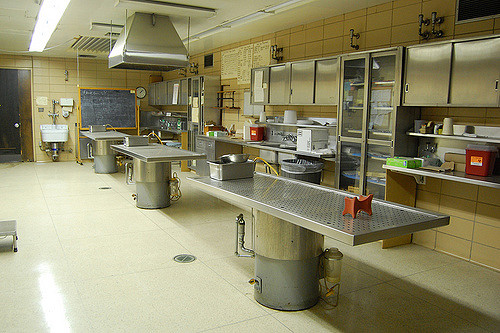READ: The Autopsy
Steps of the Autopsy
Steps of an Autopsy
Once a body arrives at the medical examiner’s office there are several steps the medical examiner will go through. Remember that the main goal of the medical examiner is to determine the cause, manner, and time of death. The basic steps of an autopsy are outlined below.
-
Basic information about the victim should be noted such as age, height, gender, hair color, and general condition.
-
The condition of the clothes should be noted. Clothes should be packaged appropriately as evidence.
-
The condition of the skin should be examined. Any bruises, scrapes, cuts, wounds, tattoos, scars, or other defining features should be documented.
-
An x-ray is sometimes performed if it is believed that bullets, or other foreign objects are in the body. X-rays are also helpful in cases where broken bones need to be seen.
-
Any evidence found during the examination should be appropriately packaged and documented. Fingerprints are often taken, along with blood and hair samples.
-
Once the external examination is complete, the examiner will open the body. A large Y shaped incision is made from the shoulders to the belly button.
-
The medical examiner will look for broken ribs and then remove the ribs to examine the organs beneath.
-
Blood and tissue samples might be taken from certain organs during the process.
-
The heart and lungs will be examined and removed, then the stomach, intestines, and other abdominal organs will be removed. Each organ will be weighed and tissue samples will be taken from each organ for further examination.
-
Urine samples are taken to test for drugs or other substances.
-
The eyes and the head will then be examined for damage.
-
The top of the skull will be removed and the brain will be examined. Tissue samples will be taken.
-
Once the autopsy is complete and all organs have been examined and documented, the body will be prepared to be returned to the family for a funeral.
-
The medical examiner will complete any other testing on the tissues of the body, and then write a report about the cause, time, and manner of death.
-
A death certificate will be issued.
It is important that the medical examiner document all parts of the autopsies with notes and photographs. It is also important that tissue samples be saved for further investigation. Once the body is buried, there will be no way to recover any more evidence from the body. Any evidence that is found during the autopsy such as bullets, fingernail scrapings, etc., should all be packaged and submitted as evidence.

Many people wonder if an open casket funeral is possible after an autopsy has taken place. In most cases, you won’t be able to tell an autopsy has occurred once the body is prepared for burial and an open casket funeral is definitely possible. The only exception to this is if there were wounds to the head or face that required further examination.